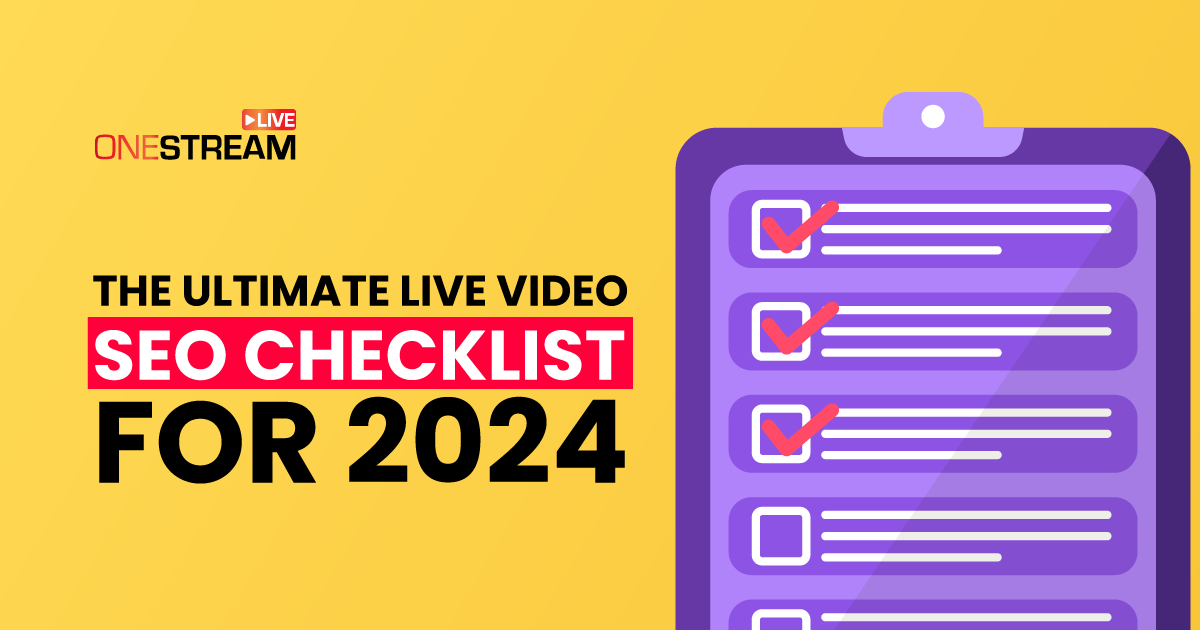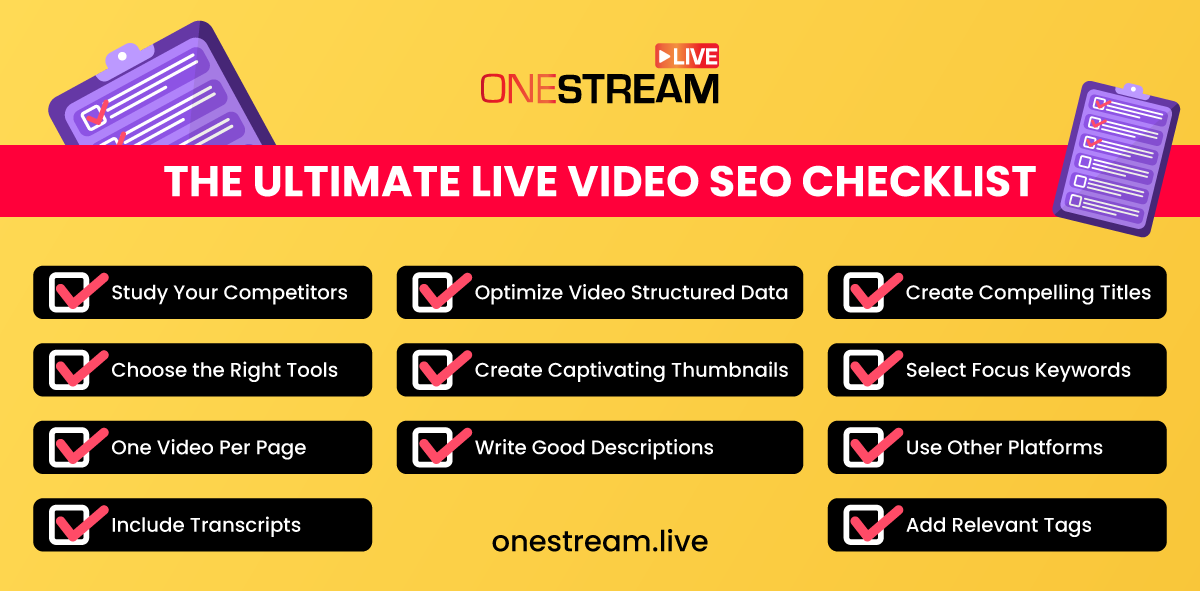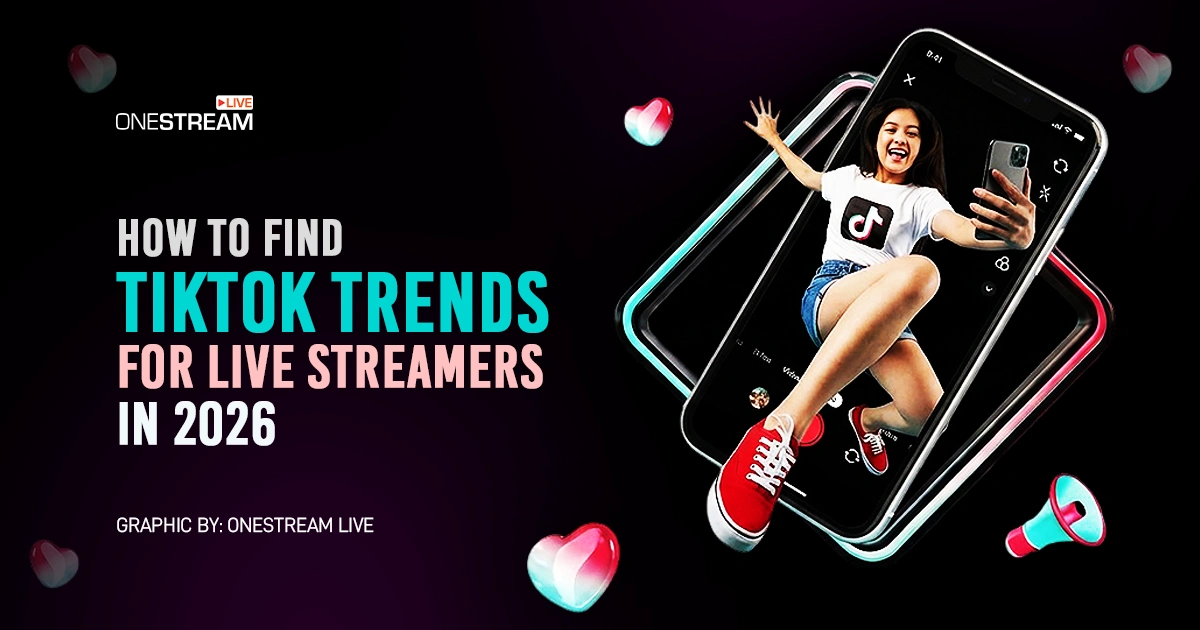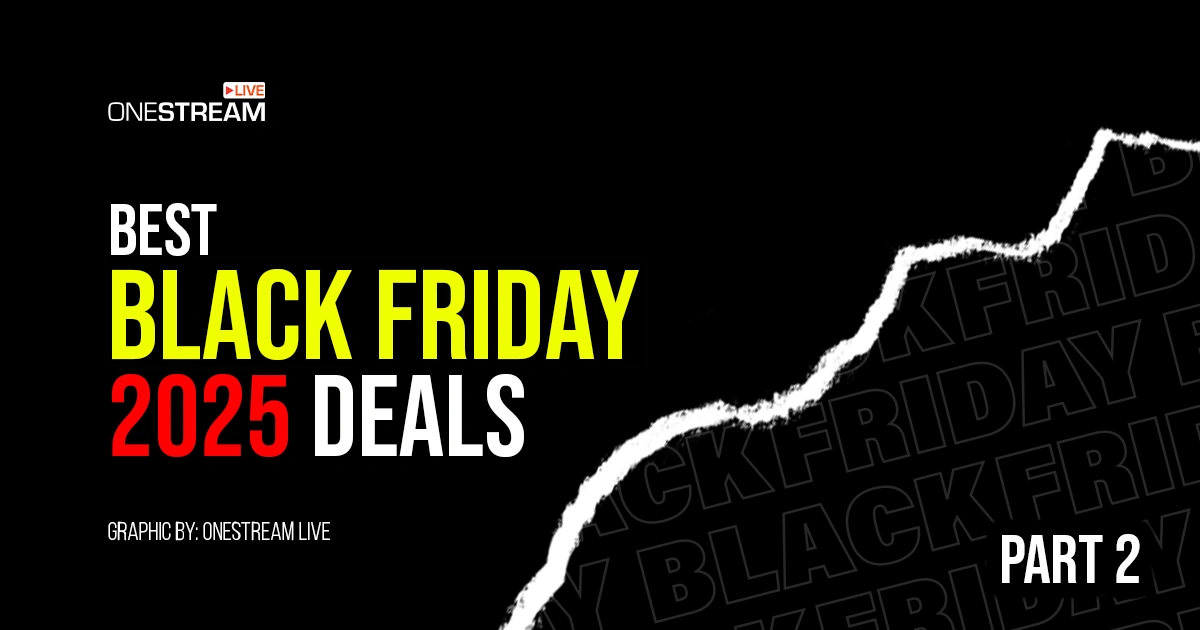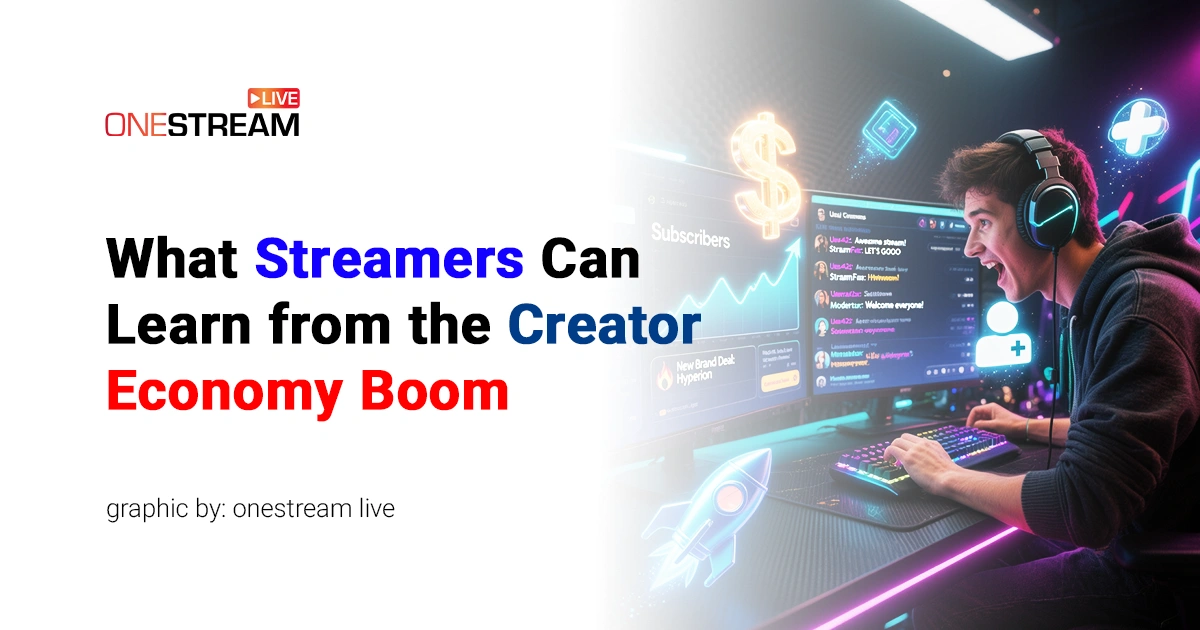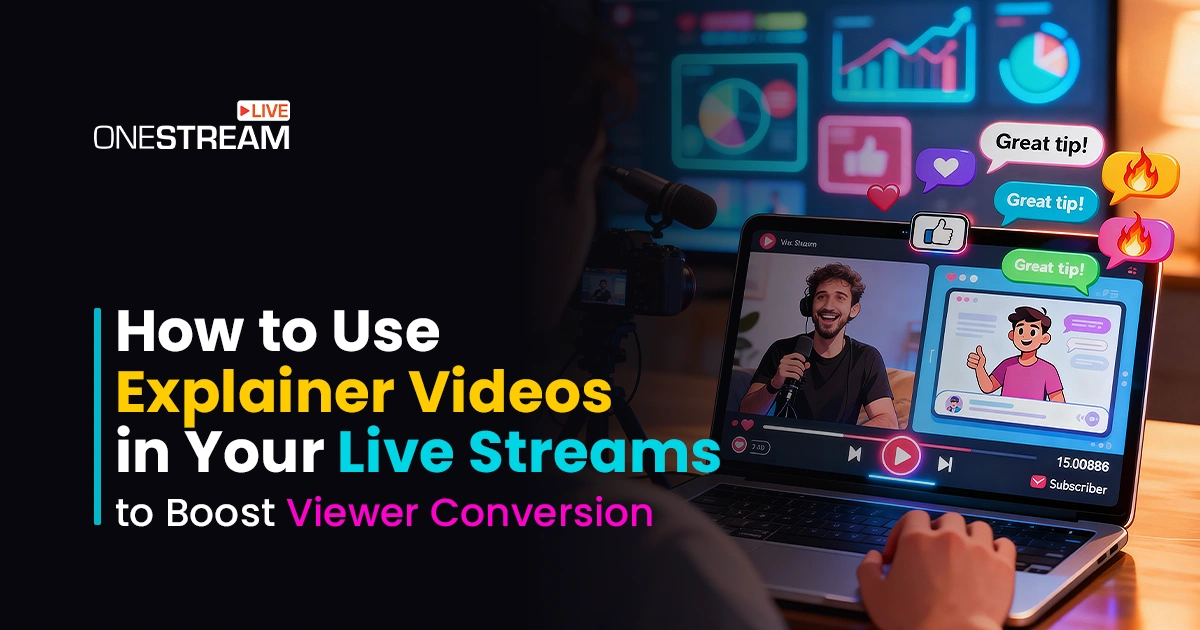You’re missing out big time if you’re not optimizing your live videos for SEO in 2024. With more than 500 hours of video uploaded every minute, following a live video SEO checklist is absolutely necessary to rule the game.
Follow along as we lay out a foolproof live video SEO checklist to ensure your videos hit the mark and drive meaningful traffic. Let’s get your live videos optimized—shall we begin?
What is Live Video SEO?
Live video SEO involves making your live streams easily discoverable and engaging for targeted audiences. Unlike static video SEO, live video focuses on real-time content and demands strategies that cater specifically to the unique nature of live broadcasts.
So, what does this mean for you? This means that integrating focused keywords and enhancing video SEO analysis can significantly help your content be seen by the right people.
The Ultimate Live Video SEO Checklist in 2024
Are you struggling to get your videos noticed despite the effort? You’re not alone. The challenge is real, with platforms like YouTube receiving vast amounts of uploads every minute.
In 2024, the rules of engagement are clearer than ever: optimize meticulously and cater to your audience’s preferences. This section outlines the ultimate live video SEO checklist, providing a step-by-step guide so your live videos are perfectly poised for success.
Choose the Right Tools
Start with the foundation—select tools that help enhance your video’s SEO capabilities. Tools for video SEO analysis, like TubeBuddy or VidIQ, can provide invaluable insights into how your videos perform and suggest improvements.
For live streaming, try out the ultimate streaming companion: OneStream Live. With SEO-friendly features like customization of title, description, tags, and thumbnails, be number one with OneStream Live.
Select Focus Keywords
Keyword optimization for videos is extremely important for targeting the right viewers. Choosing keywords can literally make or break your live video’s visibility. And you should follow the main WordPress or Webflow SEO guidelines for optimizing keywords, depending on the platform your website is built on.
Begin with smart keyword research. Tools like Ahrefs, Semrush, and other Semrush alternatives offer insights into search behaviors and trends, helping you identify keywords.
For instance, SEMrush reports that keywords incorporating “how-to” or “tutorial” can increase search traffic by up to 55% for live videos. When selecting keywords, consider the specificity and relevance to your live stream’s content.
Keywords that are too broad may draw the wrong audience. Instead, choose keywords specific to your broadcast content, like “live cooking class” or “tech gadget review.”
Incorporate these keywords naturally in your video’s title, description, and spoken content during the live stream. This will aid in discoverability through search engines and platform-specific search features.
Study Your Competitors
Gain an edge by understanding what works for others in your niche. Analyze top-performing videos to identify effective SEO practices and video ranking strategies that could be adapted for your content.
Pay attention to:
- Titles and descriptions: How do competitors structure their SEO elements? What keywords are they targeting?
- Engagement rates: Likes, comments, shares, and watch time can indicate what content resonates with audiences.
- Video quality and presentation: Visual and audio quality, on-screen graphics, and the overall presentation style can influence viewer retention.
- SEO strategies: Note any innovative SEO tactics they use, like SEO optimized video descriptions or effective call-to-action placements.
Create Compelling Titles
The title of your live video is often the first point of contact with your potential audience. A compelling title does more than just describe your video; it entices viewers to click and watch.
To craft titles that resonate and perform well, consider the following tips:
- Include Keywords Strategically: Place your primary keyword towards the beginning of the title.
- Be Clear and Descriptive: Ensure your title accurately reflects the content of your video. Misleading titles can lead to high bounce rates, negatively impacting your SEO efforts.
- Invoke Curiosity or Offer Solutions: Titles that pose a question or promise to solve a problem tend to attract more views. For example, “How to Master Live Video SEO in 2024: A Step-by-Step Guide” combines both clarity and value.
Additionally, keep your titles concise. A study by Backlinko found that titles with 40 to 60 characters tend to perform best in terms of click-through rates. This length is enough to be descriptive yet succinct, avoiding cut-offs in the search results display.
Add Relevant Tags
Tags are important for video SEO, acting as a direct signal to search engines about the context of your content. When you add relevant tags, you help platforms like YouTube understand your video’s subject matter and associate it with similar content, boosting your video ranking.
Effective tagging involves a few key strategies:
- Use Focused Keywords: Incorporate the focus keywords you’ve identified through your research. These tags should be directly relevant to the content of your live video.
- Include Long-Tail Keywords: Long-tail keywords are more specific phrases that viewers might use when searching for content. They often have less competition and can drive targeted traffic to your video.
- Limit the Number of Tags: Aim for around 10-15 relevant tags to maintain focus.
For instance, if you’re creating a video titled “Ultimate Guide to Live Video SEO for Beginners,” your tags might include “live video SEO,” “SEO for video,” “beginner’s guide,” and “2024 SEO strategies.”
Write Good Descriptions
Good descriptions help search engines and viewers understand your video’s content and context, improving video ranking and viewer engagement.
Here’s how to make the most of your video descriptions:
- Start with the Focus Keywords: Place your primary focus keywords in the first two lines of the description because search engines prioritize the initial text for relevancy signals.
- Incorporate Secondary Keywords: Sprinkle related keywords throughout the description to enhance its SEO value without stuffing.
- Provide Value and Context: Clearly outline what the viewer will learn or gain by watching your video.
- Include Calls to Action: Encourage viewers to like, comment, subscribe, or follow a link. Calls to action convert passive viewers into active participants, enhancing user engagement signals favorable for SEO.
- Use Natural Language: Write in a conversational tone that reflects your brand voice. This makes your description relatable and easier to read.
Strategic description example: Imagine your video is about improving live video techniques. Your description might start with, “Master live video SEO with our step-by-step guide to optimize video SEO. Discover essential video SEO analysis techniques to boost your video ranking.”
This initial sentence packs several keywords and sets the expectation for the video content.
Pro Tip: Descriptions also serve as a space to provide additional links, such as social media profiles, websites, or resources, which can drive further engagement and traffic to other platforms.
Create Captivating Thumbnails
Research shows that videos with custom thumbnails can see up to a 30% increase in engagement rates compared to those without. They’re like a visual front door to your video content.
Here’s how to craft thumbnails that grab attention:
- Use High-Quality Images: Choose clear, high-resolution, and visually appealing images. The thumbnail should look good in both small and large sizes since it will appear in different viewing contexts.
- Incorporate Text Overlay: Briefly include text reinforcing your video title or main focus keywords. Ensure the text is legible and not overly cluttered. For example, if your video is about SEO strategies, you might add “SEO 2024 Tips” in bold, eye-catching font.
- Employ Visual Contrast: Use colors and designs that stand out against YouTube’s white background and other thumbnails. Bright colors like red, blue, or yellow can make your thumbnail pop.
- Show Emotion or Action: Thumbnails with facial expressions or mid-action shots can generate more interest. A face showing excitement, surprise, or other strong emotions can be compelling.
- Consistency is Key: Maintain a consistent style for your thumbnails to help build brand recognition. Viewers are likelier to click on a familiar thumbnail regarding style and quality.
One Video Per Page
When embedding live videos on your website, adhering to the strategy of placing one video per page is essential for maximizing live video SEO. This approach ensures that each video gets the full SEO benefit of its own dedicated page rather than competing for attention and keywords on a page cluttered with multiple videos.
Here’s why this strategy is beneficial:
- Focused SEO Efforts: Each video can be optimized around specific focus keywords, making it easier for search engines to understand and index the content accurately. This clear focus enhances the video’s ranking potential.
- Better User Experience: Pages with a single video load faster and provide a clearer, more targeted user experience. Viewers are more likely to engage deeply with the content when it’s the sole focus of the page.
- Better Analytics: Tracking the performance of a video is more straightforward when it’s the only content of its type on a page. This clarity allows for more accurate data on viewing times, engagement rates, and conversion metrics.
Include Transcripts
Incorporating transcripts for your live videos is a potent way to boost your live video SEO. Transcripts provide a text-based version of your video content, making it accessible to search engines and enhancing its discoverability.
A study by PLYMedia found that videos with transcripts have up to 16% higher retention rates than those without. Here’s how transcripts can help your SEO efforts:
- Enhanced Accessibility: Transcripts make your content accessible to a broader audience, including the deaf or hard of hearing.
- Richer Keywords Density: Transcripts naturally incorporate your focus keywords and related terms throughout the content by converting spoken words into written text. This can improve your SEO for video by providing more content for search engines to index.
- Increased Engagement: Some viewers may prefer to skim through the transcript instead of watching the entire video, especially if they seek specific information. This option can keep users on your page longer, a positive signal to search engines.
Implementing Transcripts Effectively:
- Ensure your transcripts are accurate and free of errors.
- Add timestamps to link the text to specific points in the video.
- Ensure optimization of keywords and include strategic calls to action.
Optimize Video Structured Data
Structured data refers to the specific code you can add to your website’s HTML to help search engines better understand the content of your videos. This can significantly influence how your videos are indexed and displayed in search results.
Key Benefits of Video Structured Data:
- Rich Snippets: By using structured data, your videos can qualify for rich snippets in search results. These snippets include thumbnails, star ratings, and other valuable details that can attract more clicks.
- Improved Indexing: Structured data provides search engines with explicit clues about the video content, which can lead to more accurate indexing and a higher likelihood of appearing in relevant searches.
- Enhanced Discoverability: Accurate and comprehensive structured data can also help your videos appear in specialized search features, like Google’s video search results.
Implementing Video Structured Data:
- Use Schema.org: Implement video-specific tags from Schema.org, such as VideoObject, to provide details like the video title, description, duration, and upload date.
- Include Essential Properties: To maximize the effectiveness of your structured data, include properties like name, description, and thumbnailUrl.
- Test Your Implementation: Use tools like Google’s Structured Data Testing Tool to verify that your structured data is correctly implemented and error-free.
Use Other Platforms
While YouTube might be the king of video content, using other platforms for your live videos can dramatically expand your reach and enhance your live video SEO. Platforms like Facebook Live, Instagram Live, Twitch, and even LinkedIn offer unique opportunities to connect with different audiences.
To conclude this live video SEO checklist, OneStream Live is your ultimate solution for multistreaming to 45+ social destinations simultaneously with just a few clicks. It enables you to engage with diverse audiences in ways that are most natural and effective for them.
Read More: The SEO Impact of Multistreaming Your Live Content
Concluding the Live Video SEO Checklist
In summary, integrating the live video SEO checklist into your strategy can dramatically increase your live streams’ visibility and engagement. In 2024, as competition intensifies, these meticulous adjustments—from optimizing thumbnails to integrating powerful keywords—will make the difference between being overlooked and capturing an audience.
So, I think it’s time to embrace these best practices to enhance your live video SEO and watch your online presence flourish.
OneStream Live is a cloud-based live streaming solution to create, schedule, and multistream professional-looking live streams across 45+ social media platforms and the web simultaneously. For content-related queries and feedback, write to us at [email protected]. You’re also welcome to Write for Us!

